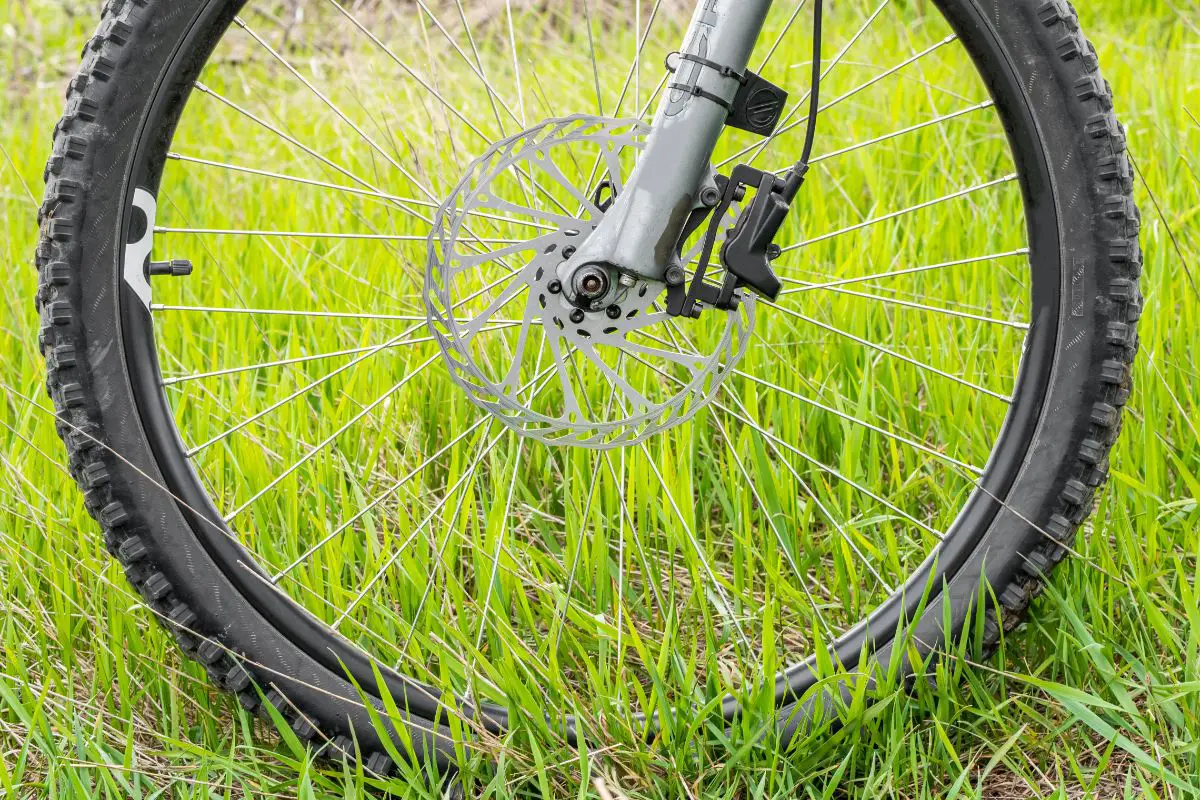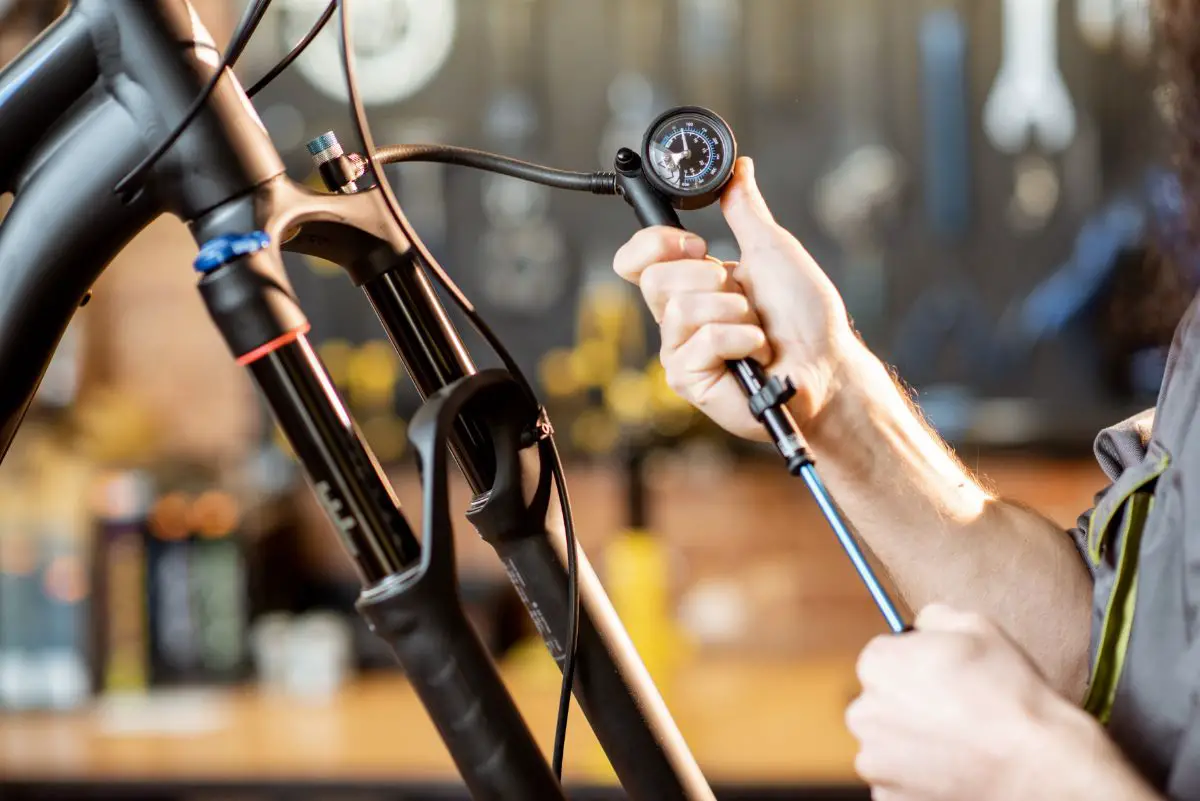
A bike fork plays a vital role in your bike. You can also call your bike fork a shock absorber device.
When you ride on roads or off roads, then your roads are not always smooth. You come across bumpy or uneven roads. Whenever you try to cross a bump, then it gives a shock to your bike.
The pneumatic tires are not enough to absorb all the shocks of the uneven road. You should remember that the more incredible the speed of riding and rougher a road, the higher the shock will be.
The bike fork absorbs all the shock to make your ride comfortable. The bike fork provides better traction when you ride on curved roads. It prevents you from jumping like a pogo when your bike hits any bump or a pothole.
It’s a boon to both road bikers and mountain bike riders. If you are a rider, then you should know about the bike fork in detail. The article discusses the parts of a bike fork and its working.
Parts of a Bike Fork
A bike fork is a part of your bike which holds the front wheel. It consists of four main components. They are as follows.
#1. Uppers
The upper is also known as the crown steer unit, which mainly contains a steer tube, crown, and legs(Stanchion). The crown steerer unit is in contact with the lowers with the help of bushings. Whenever you come across a bump, then the crown steerer unit allows the lowers to move up and down. As a result, you have a comfortable ride.
- Steer Tube – It is the tube that connects the bike to the fork.
- Crown – The crown connects the steer tube to the stanchions
- Stanchions – It is a tube that slides onto the lowers. You can find spring and damper arrangements in the stanchion. The spring and damper are usually responsible for absorbing the shock.
#2. Lowers
The lowers connect your bike fork to the wheel. You find bushings and lubricating oil lower—the bushings on the lower combine with the uppers or crown steerer unit.

There is a wiper seal that prevents any dust, dirt from entering into the internal of the fork. You need to constantly clean and lubricate the wiper seal. Otherwise, your fork may get wear and tear soon. You should check them in regular intervals like brake pads and change them from time to time.
You will see some ring-like structures near the wiper seal called foam rings responsible for holding the lubricating oil closer to the wiper seal and bushing.
#3. Spring and Damper
Spring is the primary component of a bike fork. Whenever you lift any load on the spring and disturb the load, the spring moves up and down. There is compression and expansion of spring for some time till it has utilized all its kinetic energy. Similarly, in bike forks, you find springs in the stanchions. Whenever your bike hits any bump or potholes, then the bump creates a shock. Even the weight of the rider puts some force on the spring.
Consequently, the spring moves up and down for few seconds. But, if the spring is alone, then because of the expansion and contraction of spring, your bike will be in an unbalanced position for some time whenever you cross an uncomfortable bump—That’s why the spring attaches to the damper.
The damper is a shock absorber. It converts the kinetic energy of the spring into heat energy, or in other words, you can say it quicks absorbs the disturbance of the spring. As a result, the rider will not be in an unbalanced position whenever he crosses an uneven road.
Working of Fork
The telescopic suspension fork is usually found both in road bikes and mountain bikes. They make the riding smooth and comfortable.
A mountain rider comes across many uneven roads and downhills. A telescopic fork in a bike will prevent any load from acting on the rider. So, a mountain rider will have a smooth and comfortable journey.
The uppers or the crown steerer unit of the bike fork contain a piston rod or connecting rod which connects with the piston on the lowers of the bike fork. This piston rod acts as a damper, and a spring attaches to the damper.

The lower of the bike fork acts like an outer cylinder that houses the inner cylinder. The inner cylinder has a piston, hydraulic oil, and four valves. When your bike crosses a bump, then the piston rod compresses the piston.
An external force generates on the hydraulic oil. Now the hydraulic oil is incompressible, which is there inside the inner cylinder. So, it tries to escape from the inner cylinder by the nonreturn valves. The oil starts moving to the outer cylinder.
The vacuum in the inner cylinder forces the piston to move down. As a result, the rider doesn’t feel any load whenever he crosses a bumpy road. He can have a smooth ride while traveling uneven roads.
In the second scenario, rebounding occurs. The piston will try to return to its original position.
The hydraulic fluid will return to the inner cylinder with the help of a rebound valve. The hydraulic fluid exerts pressure on the piston. So, the piston will move up. Finally, the spring which attaches with the damper or connecting rod returns to the original position. So, in this way, a telescopic suspension fork works.
Advantages of Telescopic Fork
- Simple in design
- Cheap to manufacture
- Neat and clean appearance.
- Lighter than old systems
Conclusion
A bike fork is quite essential in a bike. Nowadays, you see potholes and bumps on roads. Have you ever imagined if the bike fork wouldn’t be there in your bike, then what would happen. You will be moving up and down like you are aspiring for a few seconds, which is quite annoying.
The bike fork protects you from the shock or load of the bump. So, if you are a bike rider, then this article is for you. The parts of a bike fork and its working describes above, hoping you understand the importance of a bike fork in your bike.





